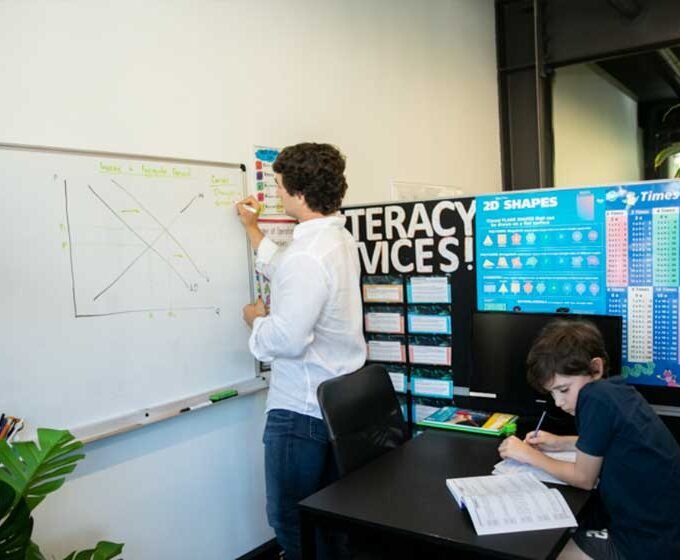Intuitive decision-making gets us into trouble. It’s driven by cognitive biases, emotions, and social pressures that often lead to poor outcomes in health, finances, career moves, and major life transitions. These gut-feeling approaches get undermined by anchoring bias, availability heuristic, present bias, social proof, and emotional reasoning. Mathematical modeling offers organized alternatives. Decision trees, probability analysis, optimization methods, and statistical evaluation provide structured processes that help you make choices aligned with your long-term values and goals.
In an era of unprecedented options, those same mental shortcuts can land us in deeper trouble than ever.
Today’s world throws more complexity at us than any generation before.
We’ve got more career options, health interventions, financial instruments, and places we could live than our parents ever dreamed of. The cognitive shortcuts that served our ancestors in simpler times now methodically produce bad results when we’re facing high-stakes decisions with long-term consequences. Intuition fails through particular cognitive mechanisms that operate predictably. These frameworks offer a practical counterpoint. You can learn and apply these approaches deliberately to improve results across health, financial, career, and relationship choices.
The Methodical Failures of Intuitive Decision-Making
Here’s the thing about intuitive decision-making: it doesn’t fail randomly. It fails through predictable cognitive mechanisms that operate consistently across life domains. We’re remarkably consistent in our irrationality. These failures can be corrected through structured frameworks. The five core cognitive mechanisms that undermine intuitive choices include anchoring bias, availability heuristic, present bias, social proof, and emotional reasoning.
Anchoring bias causes the first piece of information to disproportionately influence what comes next. In salary negotiations and housing purchases, the opening numbers mentioned can affect final results regardless of actual value.
The availability heuristic leads people to rely on recent or vivid examples rather than statistical reality. This produces relationship decisions influenced by dramatic friend experiences rather than broader pattern data. It also drives health choices based on anecdotal success stories rather than effectiveness research.
Present bias makes immediate rewards methodically outweigh larger future benefits. You see this in fitness decisions that favor comfort over long-term health results. It shows up in financial choices that prioritize current spending over retirement security. It appears in career moves that emphasize present salary over skill development.
Social proof drives decisions based on what others do rather than personal values. This influences educational investments that follow peer choices and relocations based on social media portrayals.
Emotional reasoning substitutes feelings for evaluation in career decisions based on current dissatisfaction and relationship choices driven by infatuation that ignore compatibility indicators.
These cognitive failures serve immediate psychological comfort. They reduce decision anxiety, maintain social belonging, and avoid analysis effort. But they deliberately produce suboptimal results when measured against your actual long-term values and goals. Because intuitive failures follow predictable patterns, mathematical modeling frameworks can provide structured alternatives that bypass these cognitive vulnerabilities.
So what does it mean to replace intuition with something more reliable?
What Mathematical Modeling Means for Personal Decisions
Mathematical modeling in personal contexts involves structured frameworks for organized evaluation using explicit criteria and reproducible processes. It’s not about complex equations or advanced mathematics. Many assume ‘mathematical’ signals PhD-level complexity.
Look, the ‘mathematical’ component refers to deliberate reasoning and logical consistency, not computational difficulty.
Mathematical modeling means defining what result you want to optimize. It means identifying relevant variables affecting that result. You establish explicit criteria for evaluating options. You weigh tradeoffs between competing priorities. You calculate expected results under uncertainty and compare alternatives using consistent metrics. These reasoning steps lean on basic arithmetic and simple probability—no advanced math degree required.
The key advantage over intuition? Mathematical modeling makes your reasoning explicit and reproducible. When you document decision criteria, measure tradeoffs, and calculate expected results, you can evaluate whether your reasoning serves your values. You can check for consistency across similar decisions and identify where biases influence your judgment.
Intuitive decision-making keeps reasoning opaque. This makes deliberate improvement impossible.
Anyone who compares prices while shopping, calculates tips, or estimates travel times already uses basic mathematical reasoning. Personal decision modeling extends these everyday quantitative skills to higher-stakes choices through structured frameworks that organize analysis without requiring additional mathematical capabilities. This methodical approach manifests through four core techniques addressing different decision structures.

Core Analytical Techniques and Their Contexts
Different decision types require different analytical approaches. Decision trees work for sequential choices. Probability analysis handles uncertain results. Optimization tackles resource allocation. Statistical analysis identifies patterns.
Decision trees are useful for sequential choices where early decisions affect later options. They visualize branching paths to reveal how present choices expand or constrain future possibilities. Take career moves where accepting one position affects your next opportunity set. A high-paying job in a declining industry versus lower salary in a growing field affects your five-year trajectory completely differently. Educational investments work the same way—degree selection determines available career paths. Even relationship decisions follow this pattern, where commitment level affects geographic mobility.
Decision trees reveal something crucial: they expose opportunity costs by making visible the future options you’re foreclosing with present choices. They address present bias by measuring how immediate decisions affect long-term ranges.
Probability analysis measures the likelihood of different results and calculates expected values when results are uncertain. Health interventions, for example, involve effectiveness data, financial investment returns, career risk assessment, and relationship compatibility evaluation. What matters most: low-probability high-impact results get distorted by availability heuristic. Dramatic success stories seem more likely than statistical reality suggests. Expected value calculations correct this distortion.
Optimization methods determine how to allocate limited resources across competing priorities to maximize desired results. In personal finances, this applies when you’re distributing time across fitness, career development, relationships, and personal interests with fixed total time. It works for budget distribution across current consumption, debt reduction, savings, and investment when income is constrained. It handles effort allocation across multiple skill development areas when energy is limited.
The insight here? Optimization makes tradeoffs explicit rather than implicit. It deliberately evaluates which allocation produces results most aligned with stated priorities instead of resource allocation based on urgency or social pressure.
Statistical analysis evaluates personal data over time to identify which behaviors correlate with desired results. This applies to fitness routines tracking which exercise and nutrition combinations produce desired health metrics. It works for productivity strategies analyzing which work patterns correlate with output quality. It handles relationship satisfaction by evaluating which activities predict conflict versus connection. It covers financial behavior by identifying which spending categories provide satisfaction versus regret.
This reveals something important: statistical analysis on personal data reveals what works for you particularly rather than relying on general advice or anecdotal examples. Individual variation means population-level recommendations often don’t optimize individual results.
Seen in isolation, each tool looks domain-specific—but together they form a universal playbook for all your high-stakes decisions.
Unified Principles Across Life Domains
Health, financial, career, and relationship decisions share underlying structures that make them perfect for mathematical modeling. You’re constantly evaluating tradeoffs, measuring uncertainty, assessing opportunity costs, and spotting patterns.
Tradeoff evaluation shows up everywhere. Health decisions pit immediate satisfaction against long-term results. Financial decisions weigh current consumption against future security. Career decisions balance salary against skill development or work-life balance. Relationship decisions contrast independence with partnership benefits. Mathematical modeling makes these tradeoffs explicit and measurable instead of vague. You can deliberately compare competing considerations.
Every domain involves decisions with uncertain results too. Fitness interventions might not work. Investments might tank. Career moves might disappoint. Relationships might fizzle. Probability analysis gives you consistent frameworks for evaluating options when you can’t predict the future.
All domains involve opportunity costs as well. Time spent on health reduces career development time. Savings cut current lifestyle options. Career focus affects relationship availability. Relationship commitment limits where you can move. Decision trees and optimization methods help you deliberately evaluate what you’re giving up with each choice.
Mathematical modeling isn’t domain-specific expertise. It’s a deliberate thinking approach that transfers across contexts.
Learning to apply decision trees to career choices builds capability that transfers to relationship decisions. Developing probability analysis skills for health decisions enhances financial risk assessment. The underlying meta-skill is organized evaluation of tradeoffs, uncertainty, opportunity costs, and effectiveness patterns. Armed with these universal principles, the next step is learning how to translate them into real-world action.
Putting Models Into Practice
Mathematical modeling becomes valuable when you translate abstract analysis into concrete action through a structured process. You move from problem definition through data collection, analysis, interpretation, to behavioral change.
Problem definition and data identification are critical first steps. Mathematical modeling requires particular measurable objectives. Vague goals like ‘better health’ or ‘financial improvement’ won’t work. You need to define whether you’re optimizing weight loss rate, cardiovascular fitness, budget surplus, debt reduction timeline, career advancement speed, relationship satisfaction, or life balance.
This specificity determines what data matters and which analytical technique applies.
Data collection methods include practical systems for gathering information. Fitness tracking applications capture nutrition and exercise data. Financial software categorizes spending and tracks assets. Career journals document skill development opportunities and satisfaction factors. Relationship check-ins record communication patterns and satisfaction levels.
The data doesn’t need to be perfect. Even rough models beat gut feelings working from zero data.
Analysis execution involves several steps depending on your chosen method. For decision trees, you map choice branches and assign probability and value estimates to endpoints, then calculate expected values backward through the tree. For probability analysis, you estimate likelihood and calculate weighted averages. For optimization methods, you establish constraints along with objective functions, then identify allocations that maximize desired results. For statistical analysis, you evaluate correlations between behaviors and results using your tracked data.
Basic spreadsheet software handles most personal decision modeling without requiring specialized tools.
Implementation requires taking action based on analytical insights, then monitoring whether actual results match predictions. This creates a feedback loop for refinement. You update probability estimates based on observed results. You adjust optimization constraints based on real resource availability. You modify behavior based on statistical correlations.
Your models get sharper as you gather more data and fold in real results. Of course, turning iterative successes into a reliable skillset calls for both guided instruction and deliberate practice.
Developing Decision-Making Capability
Mathematical modeling for personal decisions represents a developable capability that’s accessible to anyone willing to invest in methodical skill-building. Educational approaches that emphasize authentic real-world application demonstrate how quantitative reasoning becomes practical competence.
You don’t need to figure this out alone—structured learning accelerates capability development. Formal education programs show this principle in action. When students learn through practical application rather than abstract theory, they develop skills that transfer directly to life decisions. IB math applications and interpretation HL provides students with extensive experience using statistical analysis, mathematical modeling, and data interpretation for authentic real-world problem-solving. This includes personal finance optimization, health prediction, and consumer decision analysis that builds practical analytical skills. These capabilities become directly applicable to improving personal life effectiveness through evidence-based decision-making rather than relying on emotional impulses or social influences. This educational model shows that mathematical modeling becomes practical when learned through application, supporting the broader argument that you can acquire these decision-making frameworks regardless of prior mathematical experience.
Self-directed skill development involves deliberate practice starting with low-stakes decisions. Try optimizing grocery spending or tracking fitness effectiveness where mistakes have limited consequences but provide learning opportunities. Apply single techniques in isolation before combining frameworks. Master probability analysis for one decision type before attempting integrated modeling. Use simple tools like spreadsheets and basic calculators before considering specialized software.
Seek feedback by comparing predictions to actual results, then refining your analytical approach based on accuracy.
There’s definitely a learning curve. Initial mathematical modeling attempts require more time and effort than intuitive decisions. Early analyses feel awkward. Probability estimates seem arbitrary. Optimization calculations appear tedious. But this upfront investment yields returns through improved decision quality and transferable capability. But every tool has its limits—recognizing when to apply methodical analysis and when to pause is just as important.
Limits of Mathematical Modeling
Mathematical modeling improves certain decision types but isn’t optimal for all choices. Recognizing when deliberate analysis helps versus when it hinders prevents both over-quantification and analysis paralysis.
Analysis paralysis can delay decisions indefinitely through constant refinement of probability estimates, endless data collection, and repeated recalculation. This risk escalates when decisions face time pressure or when analysis complexity exceeds actual decision stakes. The modeling investment must remain proportional to decision importance. Major life transitions justify extensive analysis, but daily choices don’t warrant sophisticated modeling. Recognizing when ‘good enough’ beats ‘perfect’ prevents deliberate analysis from becoming decision avoidance.
Data availability limitations reduce modeling value when information is unavailable, unreliable, or extremely costly to obtain. Health decisions sometimes lack effectiveness data—for novel interventions with no track record. Financial projections depend on unpredictable market conditions. Career results hinge on unforeseeable industry changes. Relationship compatibility involves factors that resist measurement.
In these contexts, mathematical modeling can create false precision where analysis appears organized but rests on assumptions so uncertain that results carry little information value. Some decisions involve so many interacting variables, such high uncertainty, and such profound value tradeoffs that mathematical modeling becomes impractical and potentially produces more confusion than clarity.
Intuition provides value in particular contexts. Fast-moving decisions with limited information and low stakes often favor intuitive responses. Choosing restaurants, planning weekend activities, and responding to social invitations don’t warrant decision trees or probability calculations. Similarly, decisions requiring immediate response may not permit modeling delays.
Intuition also provides value when accumulated experience has developed accurate pattern recognition in familiar contexts. Some life factors resist meaningful measurement—love, purpose, meaning, aesthetic value, and moral considerations. Forcing numerical frameworks on these can distort rather than clarify, as mathematical modeling handles tradeoffs involving measurable results but shouldn’t claim authority over fundamentally qualitative considerations.
Still, knowing when to lean on numbers—and when to trust your gut—is what real decision agency looks like.
Reclaiming Decision Agency
Mathematical modeling helps you make better life decisions. It gives you organized frameworks that serve your personal values instead of letting cognitive biases and mental shortcuts run the show.
You’re already doing math every day. Comparing prices, estimating how long things’ll take, weighing tradeoffs. The real question isn’t whether you’ll think quantitatively about life decisions. It’s whether you’ll structure that thinking through deliberate frameworks or just wing it with intuitive shortcuts that feel comfortable but don’t serve your long-term goals.
Sure, the methodical approach takes more upfront effort than going with your gut. But here’s the thing about that modest skill investment—it keeps paying dividends through better decision quality across all your major life choices for years to come.
Your biggest life decisions deserve the same structured analysis you’d use for any other complex problem with lasting consequences.
Those predictable cognitive mechanisms that mess up intuitive choices? They’ll keep operating until you replace them with something better. Mathematical modeling provides that alternative. It’s not perfect, but it’s deliberately superior to whatever bias happens to fire first in your brain.
Why not sketch a simple decision tree for your next big choice this week? Your future self will thank you.
















